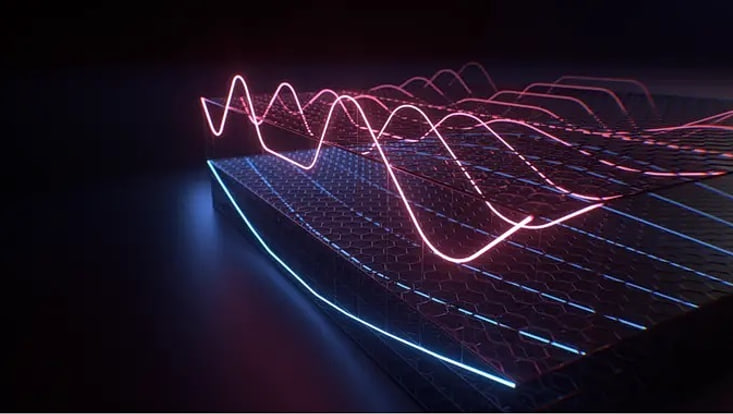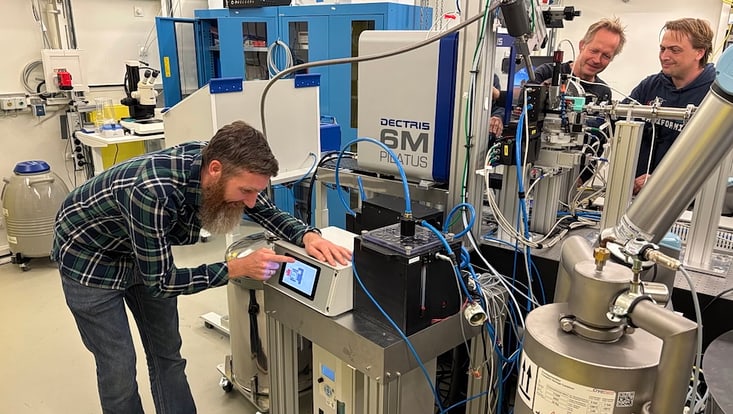Imaging of Matter
Probing ferromagnetic order with spin-flip dynamics
15 May 2019

Photo: UHH, AG Schmelcher
Scientists from the Centre for Optical Quantum Technologies at Universität Hamburg have identified an unconventional ferromagnetic order emerging in one-dimensional few-body systems. The newly found order is shown to be related to the entanglement properties of the system and opens new avenues of research in the field of Quantum Magnetism. The team presents its findings in the New Journal of Physics.
In conductors the magnetic properties of the delocalized electrons are qualitatively understood in terms of the Stoner instability. This occurs when the interparticle repulsion between the spin-up and spin-down electrons exceeds the energy benefit of their pairing in the same state. As a consequence a partially or fully spin-polarized state of the electrons is preferred. “To verify and emulate the latter mechanism, scientists have recently employed ultracold fermionic ensembles. However, in such systems the Stoner instability competes with the process of molecule formation,” Prof. Peter Schmelcher explains. “Due to the competition of these two processes, the presence of the Stoner instability in ultracold atoms has not been verified in an unambiguous manner.”
Recent advances in ultracold atoms allow for the experimental realization of few ultracold fermions confined in elongated traps which represent a quasi-one-dimensional environment. In these kind of systems molecule formation is greatly reduced. Motivated by this fact, the scientists, who are members of the cluster of excellence "CUI: Advanced Imaging of Matter", were now able to theoretically explore the dynamical stability of a fully-polarized fermionic system by driving the constituting spins. This allowed them to identify and characterize the emerging ferromagnetic order occurring during the out-of-equilibrium dynamics of such systems.
The researchers specifically showed that the spin-polarization of one-dimensional fermions is not stable independently of the interaction strength – a fact which contradicts the prediction of the Stoner instability. In particular, they proved the existence of an interaction regime where the inspection of the spin-spin correlations leads to a new conclusion: the spins are fully aligned throughout the dynamics, while the spin-polarization fluctuates. The resulting ferromagnetic order emerges from the buildup of a superposition of states with maximal total spin but varying spin-polarization. Furthermore, Schmelcher’s team identified the prominent role of entanglement in this system during the decay of the spin-polarization. Indeed, the system was shown to evolve towards an almost completely spin-unpolarized NOON-like entangled state.
“This study deals with the case of parabolic confinement,” Schmelcher explains. “However, it is speculated in the literature that the properties of ferromagnetism may vary depending on the confining potential, that is the external trap. An intriguing avenue of further endeavors would be to examine whether the external confinement can be utilized in order to steer the magnetic properties of fermionic ensembles. Additionally, investigations on whether a similar order occurs in higher dimensional settings also provide a major perspective for future studies.”
Citation:
G.M. Koutentakis, S.I. Mistakidis, and P. Schmelcher
“Probing Ferromagnetic Order in Few-Fermion Correlated Spin-Flip Dynamics”
New Journal of Physics 21, 053005 (2019)


